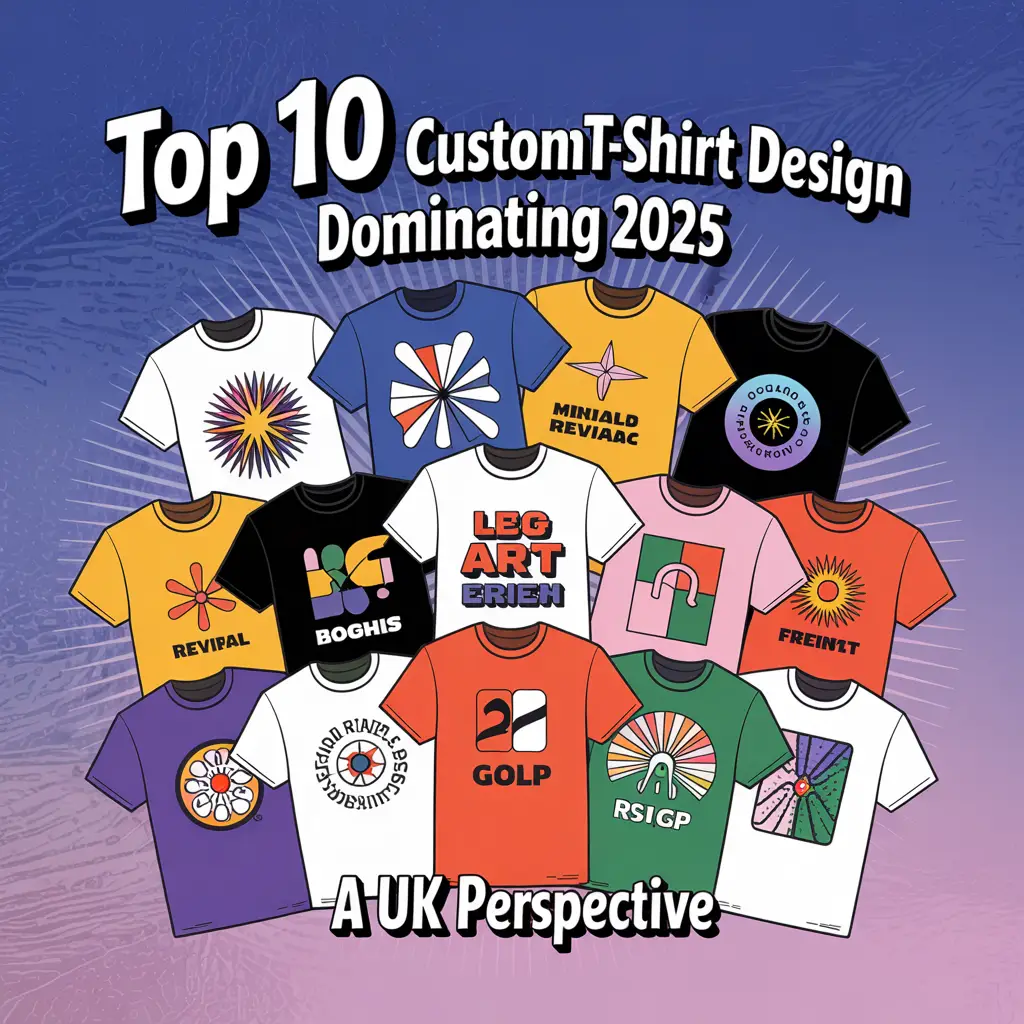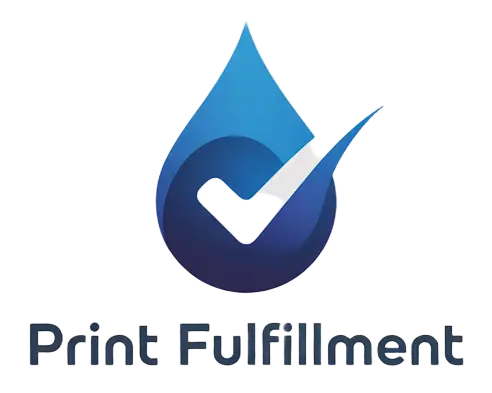Blog
Top 10 Custom T-Shirt Design Trends Dominating 2025 – A UK Perspective

In the dynamic world of fashion, custom t-shirts continue to be a canvas for self-expression, innovation, and cultural commentary. As we approach 2025, the UK market is poised to embrace a blend of sustainability, technology, and nostalgia, driven by eco-conscious consumers and digital advancements. This article explores the top 10 custom t-shirt design trends set to dominate 2025, offering insights for businesses aiming to captivate the UK audience.
1. Sustainable and Eco-Conscious Materials
The Green Revolution in Fashion
The UK’s stringent environmental regulations and consumer demand for sustainability are reshaping material choices. By 2025, expect organic cotton, recycled polyester, and innovative fabrics like hemp and bamboo to dominate. Water-based inks and digital printing methods, such as Direct-to-Garment (DTG), will minimise waste. Certifications like Global Organic Textile Standard (GOTS) and Fair Trade will be key selling points. Brands like Rapanui in the Isle of Wight exemplify this shift, using renewable energy and closed-loop systems.
UK Tip: Partner with local suppliers like Continental Clothing, a London-based eco-manufacturer, to reduce carbon footprints and appeal to eco-aware shoppers.
2. Augmented Reality (AR) Enhanced Designs
Where Fashion Meets Digital Interaction
AR transforms t-shirts into interactive experiences. Scanning a design with a smartphone could reveal animations, brand stories, or exclusive content. UK festivals like Glastonbury might adopt AR tees for immersive experiences. Companies like Zappar in London offer AR solutions, enabling brands like Burberry to merge physical and digital realms.
Implementation: Collaborate with UK tech firms to integrate AR, enhancing customer engagement through storytelling.
3. AI-Driven Hyper-Personalisation
Tailored to Perfection
AI tools will enable customers to co-create designs effortlessly. Platforms like London’s Inkthreadable use algorithms to suggest patterns based on user preferences, offering unparalleled customisation. Expect AI to analyse trends, predict designs, and streamline production.
Case Study: ASOS’s “Design Your Own” feature leverages AI for real-time previews, a trend set to expand in 2025.
4. Nostalgic Retro and Y2K Aesthetics
Back to the Future
The UK’s love affair with the 90s and Y2K era intensifies. Think Britpop graphics, vintage BBC logos, and distressed prints. Brands like Lazy Oaf in London tap into this nostalgia with neon palettes and retro typography.
Cultural Nod: Limited editions featuring iconic UK shows like Doctor Who or bands like Oasis could drive sales.
5. Inclusive and Empowering Messaging
Fashion for All
Inclusivity remains paramount. Designs celebrating diversity, body positivity, and social causes will thrive. UK campaigns like Barbie’s “Role Models” range, featuring diverse figures, set a precedent. Collaborations with NGOs like Stonewall amplify impact.
Action Step: Offer adaptive designs, such as magnetic closures for disabled users, aligning with UK inclusivity standards.
6. Bold Typography and Multilingual Slogans
Words That Resonate
Statement tees with bold fonts and multilingual slogans reflect the UK’s multiculturalism. Punjabi, Polish, or Welsh phrases alongside English cater to diverse demographics. Brands like Lush Cosmetics use punchy slogans for activism, a trend extending to apparel.
Design Tip: Use hand-lettered fonts for authenticity, resonating with grassroots movements.
7. Local Artist Collaborations and Regional Pride
Celebrating Homegrown Talent
Partnering with UK artists like Bristol’s Banksy or Manchester’s Stanley Chow fosters community ties. Regional pride tees highlighting landmarks—think Edinburgh Castle or the White Cliffs of Dover—appeal to locals and tourists alike.
Example: Printworks London collaborates with local illustrators for limited runs, boosting exclusivity.
| Rank | Trend | Key Features | Why It’s Popular in the UK |
|---|---|---|---|
| 1 | Sustainable Materials | Organic cotton, recycled fabrics, water-based inks | Strong eco-conscious consumer demand and strict UK sustainability laws |
| 2 | AR-Enhanced Designs | Interactive prints, scannable animations, digital engagement | UK’s booming tech scene (e.g., London’s AR startups) |
| 3 | AI Personalisation | AI-generated designs, custom-fit recommendations | High demand for hyper-personalised fashion (e.g., ASOS, Boohoo) |
| 4 | Y2K & Retro Nostalgia | 90s graphics, vintage Britpop references | Nostalgia for UK pop culture (Oasis, Spice Girls, etc.) |
| 5 | Inclusive Messaging | Body positivity, diversity slogans, adaptive designs | UK’s strong focus on inclusivity (e.g., London Pride, disability awareness) |
| 6 | Bold Typography | Multilingual slogans, punk-inspired fonts | Reflects UK’s multicultural cities (London, Manchester, Birmingham) |
| 7 | Local Artist Collabs | Limited-edition UK artist designs | Support for independent creatives (e.g., Bristol street art scene) |
| 8 | Minimalist vs. Maximalist | Clean lines vs. chaotic patterns | London’s dual fashion identity (corporate chic vs. Camden punk) |
| 9 | Photorealistic Prints | HD digital art, celebrity portraits | Football fan culture & art lover demographics |
| 10 | Sensory Fabrics | Heat-reactive inks, textured prints | Festival fashion & experiential retail trends |
8. Minimalist Elegance vs. Maximalist Vibrancy
Duality in Design
The UK’s fashion dichotomy thrives. Minimalist tees with clean lines cater to professionals, while maximalist designs with chaotic patterns mirror Camden’s punk heritage. Brands like COS exemplify minimalism, whereas Lucy & Yak embrace bold prints.
Market Insight: Offer both styles to cater to varied demographics, from corporate clients to festival-goers.
9. Photorealistic and Digital Art Prints
Art on Fabric
Advances in DTG printing enable high-definition art on tees. Collaborations with digital artists, such as London’s David Hockney, merge fashion and fine art. Niche markets, like football fan merch, benefit from realistic player imagery.
Tech Edge: Invest in Kornit printers for vibrant, durable prints sought by UK art enthusiasts.
10. Interactive and Sensory Fabrics
Engaging the Senses
Thermochromic inks that change colour with body heat or scratch-and-sniff designs add novelty. Though niche, these innovations could shine in UK music festivals or promotional events.
Consideration: Source eco-friendly reactive inks from UK suppliers like Colourform to align with sustainability goals.
Conclusion – Embracing the Future of Custom Tees in the UK
The 2025 custom t-shirt landscape in the UK is a fusion of past and future, sustainability and tech. Businesses must adapt by leveraging local talent, embracing eco-innovation, and harnessing digital tools. By aligning with these trends, brands can craft compelling narratives that resonate with the UK’s diverse, conscientious consumers, ensuring relevance in a competitive market.
Final Tip: Stay agile—monitor emerging trends through UK Fashion & Textile Association reports and engage with local communities for authentic insights.
